IPT’s Rotating Equipment Handbook and Training Manual
Informative and Thorough
As an on-the-job reference or a primary resource for a complete training program, IPT’s Rotating Equipment books are North America’s number one source for machinery reliability and condition monitoring information. Millwrights, industrial mechanics, heavy-duty mechanics and rotating equipment technicians find both the handbook and manual invaluable assets.
Comprehensive Machinery Reliability and Condition Monitoring Information
Featuring 500 pages, 300 illustrations and 30 tables and charts, IPT’s Rotating Equipment Handbook and Training Manual discuss proven diagnostics, corrective methods and procedures for determining the condition of machinery. They can also help in the prediction of mechanical problems and contain essential vibration analysis, bearing failure analysis, performance monitoring, and safe lockout and tagout procedures.
SECTION ONE – MAINTENANCE AND RELIABILITY |
|||
| Rotating Maintenance Problems | p 2-4 | Maintenance Planning | p 14-19 |
| MIRP Program | p 4-6 | Long Range Planning | p 14 |
| Maintenance Methods | p 6-9 | Short – Mid Range Planning | p 15 |
| Preventive Maintenance | p 6,7 | Intermediate Planning | p 15 |
| Predictive Maintenance | p 7-8 | Critical Path Method (CPM) | p 15-19 |
| Breakdown Maintenance | p 8 | Program Evaluation (PERT) | p 19 |
| Predictive Program Methods | p 9 | Predictive Maintenance Concerns | p 19-21 |
| Machine Monitoring | p 9-13 | Predictive Maintenance Applications | p 21-27 |
| Temperature | p 10 | Vibration and Noise | p 22,23 |
| Vibration | p 11 | Non-Destructive Testing | p 23,25 |
| Listening | p 12 | Fluid Analysis | p 25,26 |
| Sight | p 13 | Machinery Measurement/Evaluation | p 26,27 |
| Corrective Maintenance | p 14 | ||
SECTION TWO – VIBRATION ANALYSIS |
|||
| Introduction | p 30 | Sound Measurement | p 67,68 |
| What is Vibration | p 30 | Sound Pressure Levels | p 68-70 |
| Vibration Amplitude | p 31,41 | Sound Fields | p 71,72 |
| Vibration Facts | p 31,32 | Directional Noise | p 72 |
| Machine Properties | p 32,33 | Noise & Machinery Condition | p 72,73 |
| Excitation Forces | p 33,34 | Noise Level Facts | p 73,74 |
| Vibration Causes | p 34,35 | Vibration & Noise Measurement | p 74-79 |
| Vibration Characteristics | p 35-44 | Vibration Meters | p 74,75 |
| Vibration Frequency | p 36,37 | Vibration Monitor | p 76 |
| Vibration Displacement | p 37,38 | Vibration Analyzer | p 76-79 |
| Vibration Velocity | p 38,39 | Transducers | p 80-92 |
| Vibration Acceleration | p 39-41 | Transducer Proximity Probes | p 80-83 |
| Vibration Phase | p 42-44 | Velocity Transducers | p 83-86 |
| Frequency and RPM | p 44,45 | Hand Held Transducer | p 86,87 |
| Resonance | p 45-47 | Magnetic Pick-up Holder | p 87,88 |
| Resonance and Damping | p 47 | Shaft Stick | p 88-90 |
| Critical Speed | p 47,48 | Accelerometer Transducers | p 90-92 |
| Measuring Amplitude | p 49,50 | Microphones | p 93,94 |
| Selecting Vibration Indicator | p 50-54 | Vibration Pick-up Positions | p 94,95 |
| Numerous Frequencies | p 54-58 | Amplitude vs Frequency | p 95-99 |
| Absolute Tolerances | p 58-61 | “X-Y” Plotter | p 100,101 |
| Sound | p 61,62 | FFT Recording | p 100-104 |
| Sound Sources | p 62,63 | Spectrum Analysis | p 104,105 |
| Sound Causes | p 63 | Vibration Data Interpretation | p 105-116 |
| Sound Characteristics | p 64-67 | ||
| Vibration Causes Introduction | p 118 | Oil Whip | p 156,157 |
| Unbalance Vibration | p 118-124 | Mechanical Looseness Vibration | p 157-160 |
| Causes of Unbalance | p 119-124 | Electrical Problem Vibration | p 160-167 |
| Deposit and Build-Up | p 119 | Slip Frequency | p 162 |
| Corrosion and Wear | p 119,120 | Torque Pulsations | p 162,163 |
| Eccentricity | p 120 | Armature Problems | p 163-165 |
| Keys and Keyways | p 120-122 | Stator Problems | p 165-167 |
| Clearance Tolerance | p 122 | Belt Drive Vibration | p 167-174 |
| Distorsion | p 122,123 | Determining Belt Frequency | p 169-170 |
| Casting Imperfections | p 123,124 | Belt Tension | p 170,171 |
| Misalignment Vibration | p 124-131 | Belt Slippage | p 171,172 |
| Types of Misalignment | p 124-130 | Defective Belts | p 172,173 |
| Parallel Offset | p 124,125 | Balancing Belt Pulleys | p 173,174 |
| Angular | p 124,125 | Damaged Gear Vibration | p 174-177 |
| Parallel Offset & Angular | p 124,125 | Resonance Vibration | p 178,179 |
| Misalignment Sources | p 131 | Aerodynamic & Hydraulic Vibration | p 179-195 |
| Eccentric Forces Vibration | p 131-135 | Cavitation | p 181-187 |
| Bent Shaft Vibration | p 135-137 | Recirculation | p 187-189 |
| Resonant Whirl | p 136,137 | Discharge Recirculation | p 189,190 |
| Anti-Friction Bearing Vibration | p 137-146 | Suction Recirculation | p 190,191 |
| Frequency Analysis | p 137,142 | Flow Turbulence | p 191-194 |
| Bearing Loads | p 142,143 | Random Vibration | p 195 |
| Causes of Bearing Failure | p 143-146 | Reciprocating Forces Vibration | p 195-198 |
| Vibration from Journal Bearings | p 146-157 | Rubbing Vibration | p 198,199 |
| Excessive Bearing Clearance | p 148,149 | Rotor Flex Vibration | p 199-201 |
| Detecting Faulty Bearing | p 149,150 | Beat or Pulsation Vibration | p 201-203 |
| Oil Whirl | p 150-156 | Hydraulic System Vibration | p 203-206 |
SECTION FOUR – EQUIPMENT BALANCING |
|||
| Introduction | p 208, 209 | Balancing Methods | p 234-251 |
| In-Place Balancing | p 209 | Single Plane Balancing | p 235-246 |
| Balancing Machine | p 210,211 | Static Balancing | p 235,236 |
| Unbalance | p 212-214 | Vector Method | p 236-240 |
| Types of Unbalance | p 214-218 | Balancing in One Run | p 241-243 |
| Static Unbalance | p 214-217 | Four Run Method | p 243-246 |
| Couple Unbalance | p 217 | Two Plane-Cross Effect | p 247,248 |
| Quasi-Static Unbalance | p 217,218 | Single Plane Solutions | p 248,249 |
| Dynamic Unbalance | p 218 | Two Plane Vectors | p 249 |
| Natural Frequency | p 219,220 | Two Plane Overhung Rotors | p 250,251 |
| Critical Speeds | p 221-223 | Multi-Plane Balancing | p 252 |
| Rigid or Flexible Rotors | p 223 | Weight Changes | p 252,253 |
| Balancing Tools | p 224 | Changing Weight Radius | p 253,254 |
| Trial Weights | p 224-227 | Dividing a Balance Weight | p 254-257 |
| How Much Trial Weight | p 225-227 | Combining Balance Weights | p 257,258 |
| Attaching Trial Weights | p 227 | Balancing Tolerances | p 259-261 |
| Phase Angle Measurement | p 228-232 | Residual Unbalance Tolerances | p 261-266 |
| Trial Weight | p 228,232 | ISO Tolerances | p 264-266 |
| Before Balancing | p 233,234 | Conclusion | p 266 |
SECTION FIVE – LUBRICATION |
|||
| Introduction | p 268 | Greasing Intervals | p 305,306 |
| Lubrication Functions | p 268,269 | Oil Lubrication | p 306 |
| Lubrication Selection | p 269 | Oil Classifications | p 306-319 |
| Friction | p 269-272 | Industrial Classifications | p 306-309 |
| Lubrication Principles | p 272-278 | Gear Oil Classifications | p 310,311 |
| Viscosity | p 272,273 | Engine Oil Classifications | p 311-316 |
| Consistency | p 273 | Automotive Gear Oils | p 317-319 |
| Lubrication Film | p 274 | Lubricating Oil Types | p 320-322 |
| Boundary Layer | p 274 | Mineral Oils | p 320 |
| Hydrodynamic (Full Film) | p 274,275 | Animal & Vegetable Oils | p 321 |
| Partial Hydrodynamic | p 275 | Synthetic Oils | p 321,322 |
| Surface Finish | p 276-278 | Common Oil Additives | p 322-325 |
| Grease Lubrication | p 276-279 | Oxidation Inhibitors | p 323 |
| Grease Ingredients | p 279,280 | Pour Point Depressant | p 323 |
| Grease Types | p 280-282 | Rust Inhibitors | p 323 |
| Calcium Soap | p 280 | Anti-Wear Additives | p 324 |
| Sodium Soap | p 280 | Foam Depressants | p 324 |
| Lithium Soap | p 281 | Detergent-Dispersant | p 325 |
| Complex Soap | p 281 | Viscosity Index | p 325,326 |
| Mixed Soap | p 281 | Load Carrying Tests | p 326 |
| Inorganic Thickener | p 281 | Flash & Fire Points | p 326,327 |
| Synthetic Greases | p 282 | Oil Analysis | p 327-350 |
| Grease Additives | p 282,283 | Oil Analysis Program | p 327-330 |
| Grease Properties | p 283-294 | Oil Sample Slip | p 330-332 |
| Consistency | p 284,285 | Oil Analysis Tests | p 333 |
| Temperature and Load | p 285-289 | Spectrographic Analysis | p 333-339 |
| Dropping Point | p 287,290 | TBN and TAN | p 339-342 |
| Miscibility | p 290,291 | Allowable Soot Test | p 343,344 |
| Mechanical Stability & Wear | p 291 | Viscosity Test | p 343-346 |
| Sealing Properties | p 292-294 | Wear Metal – Iron | p 345-347 |
| Grease Selection Factors | p 294 | Allowable Oxidation | p 345 |
| Bearing Greasing | p 294-303 | Oil Sampling Procedures | p 348-350 |
| Correct Mounting | p 295 | Conclusion & Decision | p 349,351 |
| Correct Time | p 295,296 | Changing Lubricant | p 351,352 |
| Correct Quantity | p 296 | Oil Lubrication Systems | p 352-354 |
| Correct Methods | p 296-301 | Oil & Grease Storage | p 355-357 |
| Replacing Grease (anti-friction) | p 301-303 | Lubrication Scheduling | p 357 |
| Correct Amount | p 303,304 | Lubrication Department | p 358-360 |
| Application Methods | p 304,305 | ||
SECTION SIX – NON-DESTRUCTIVE TESTING |
|||
| NDT Purpose | p 362,363 | Inspection and Interpretation | p 376 |
| Direct Visual Inspection | p 363 | Ultrasonic Testing | p 376-385 |
| Remote Visual Inspection | p 364-368 | Types of Sound Waves | p 377 |
| Videoimagescope | p 364-368 | Ultrasonic Requirements | p 377-379 |
| Fiberscope | p 364-368 | Surface Preparation | p 379 |
| Borescope | p 364-368 | Ultrasonic Testing Methods | p 379-385 |
| Liquid Penetrant Testing | p 368-371 | Resonant Frequency | p 379,380 |
| Preparation and Application | p 369,370 | Transit Time Method | p 380 |
| Developing and Inspection | p 370,371 | Intensity Method | p 380-385 |
| Magnetic Particle Testing | p 371-376 | Intensity & Transit Time | p 380-385 |
| Magnetizing the Part | p 373-375 | Eddy Current Testing | p 386 |
| Particle Application | p 375,376 | Radiography Testing | p 387-389 |
SECTION SEVEN – BEARING FAILURE ANALYSIS |
|||
| Bearing Problems | p 392 | Electric Current Passage | p 409,410 |
| Anti-friction Bearing Life | p 392,393 | Journal Bearing Failure | p 410-418 |
| Load Path Patterns | p 393-398 | Unsuitable Design | p 410,411 |
| Premature Anti-friction Failure | p 398-399 | Unsuitable Operating Environment | p 411-413 |
| Lubrication Failure | p 399-401 | Lubrication Problems | p 414,415 |
| Lubrication Contamination | p 401-403 | Misalignment | p 415-417 |
| Incorrect Tolerances | p 403-405 | Ove | |

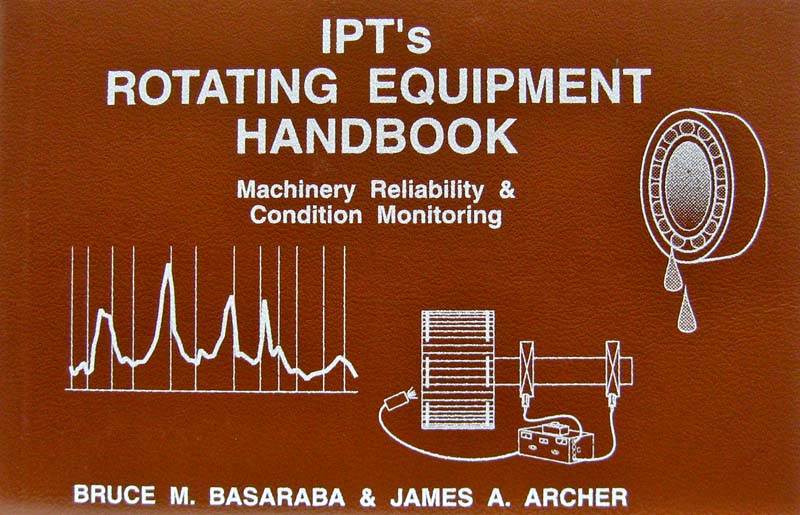
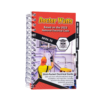
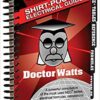
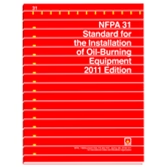
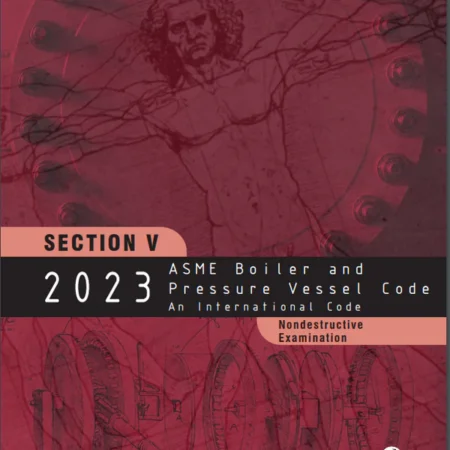
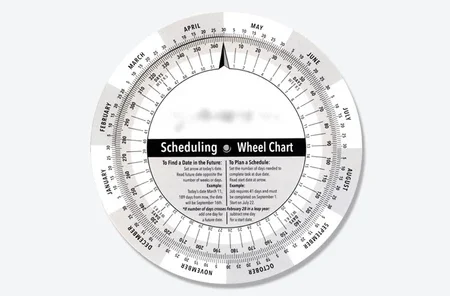
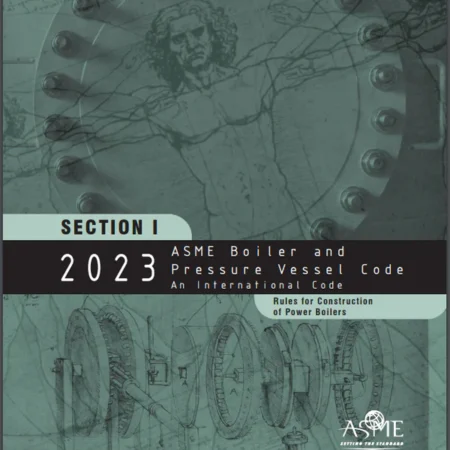
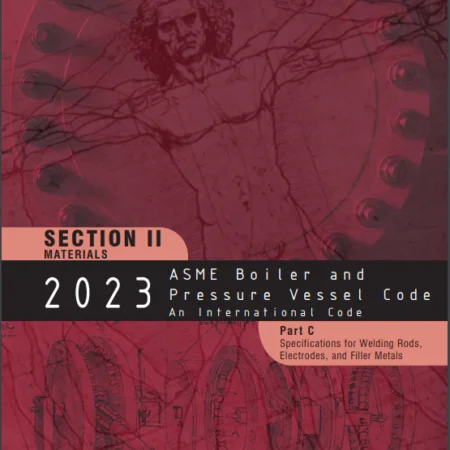
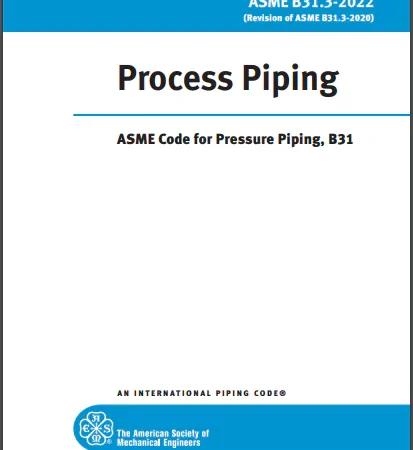

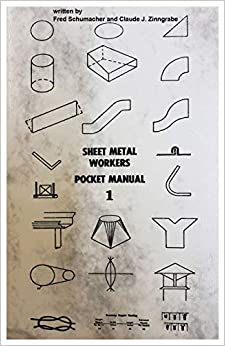
Reviews
There are no reviews yet.